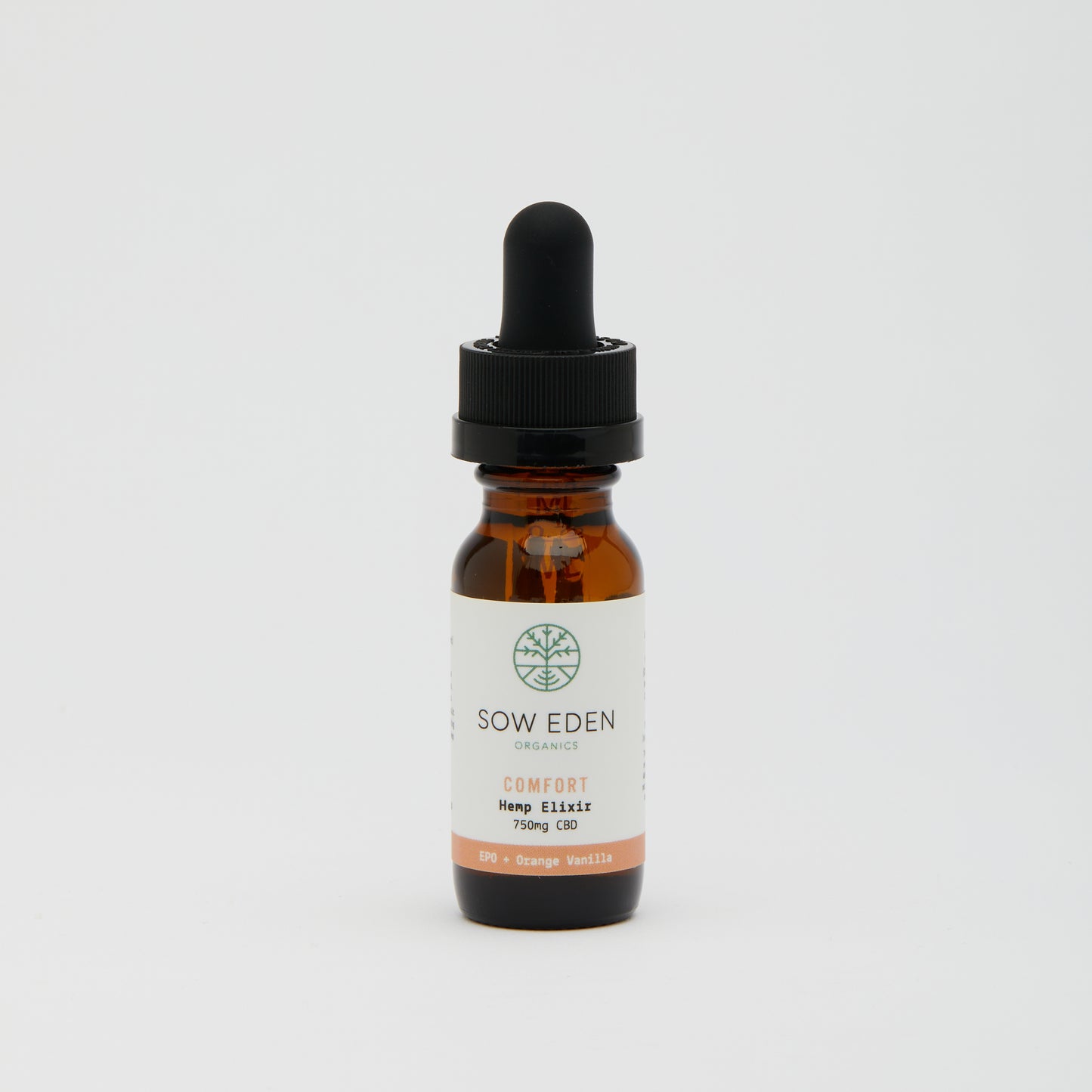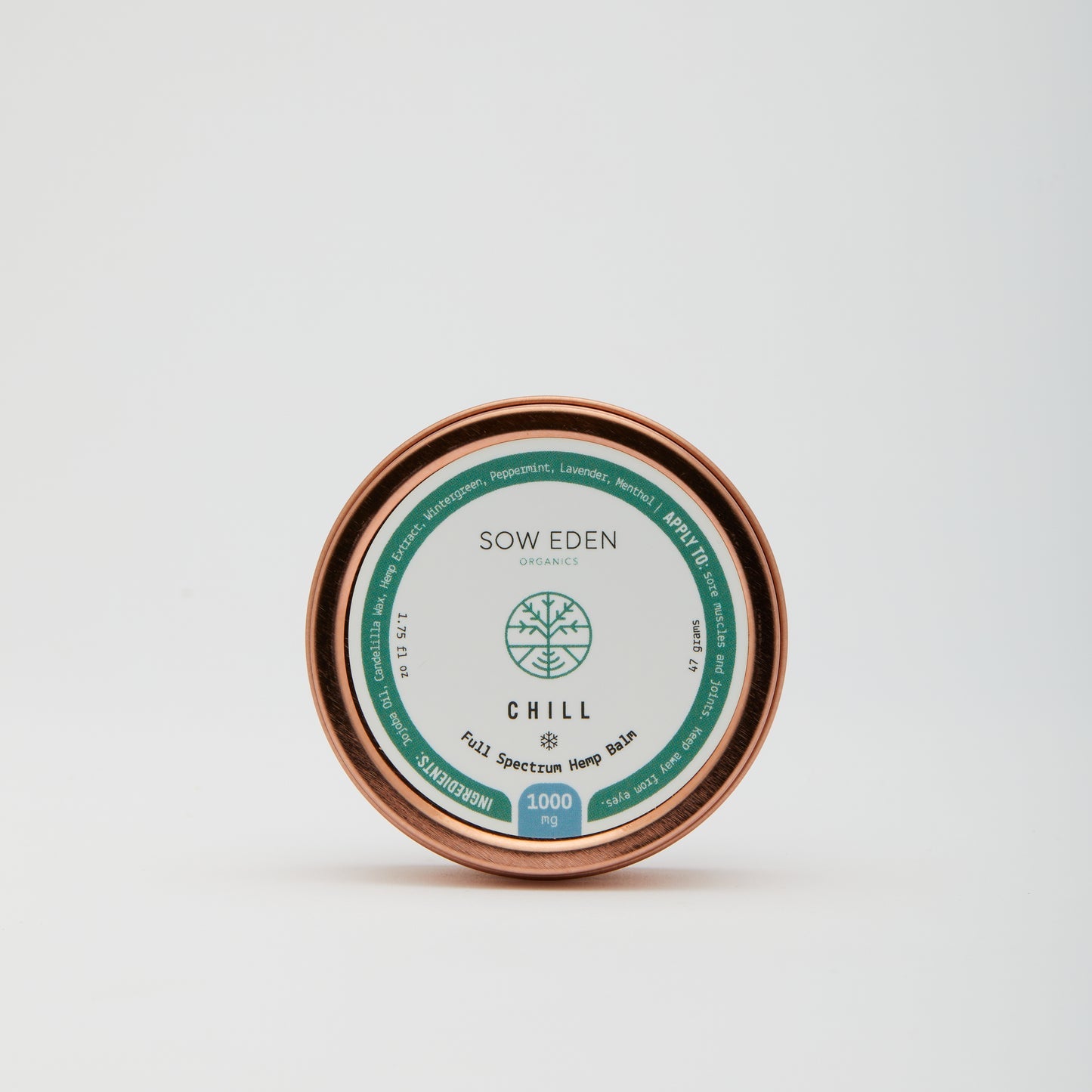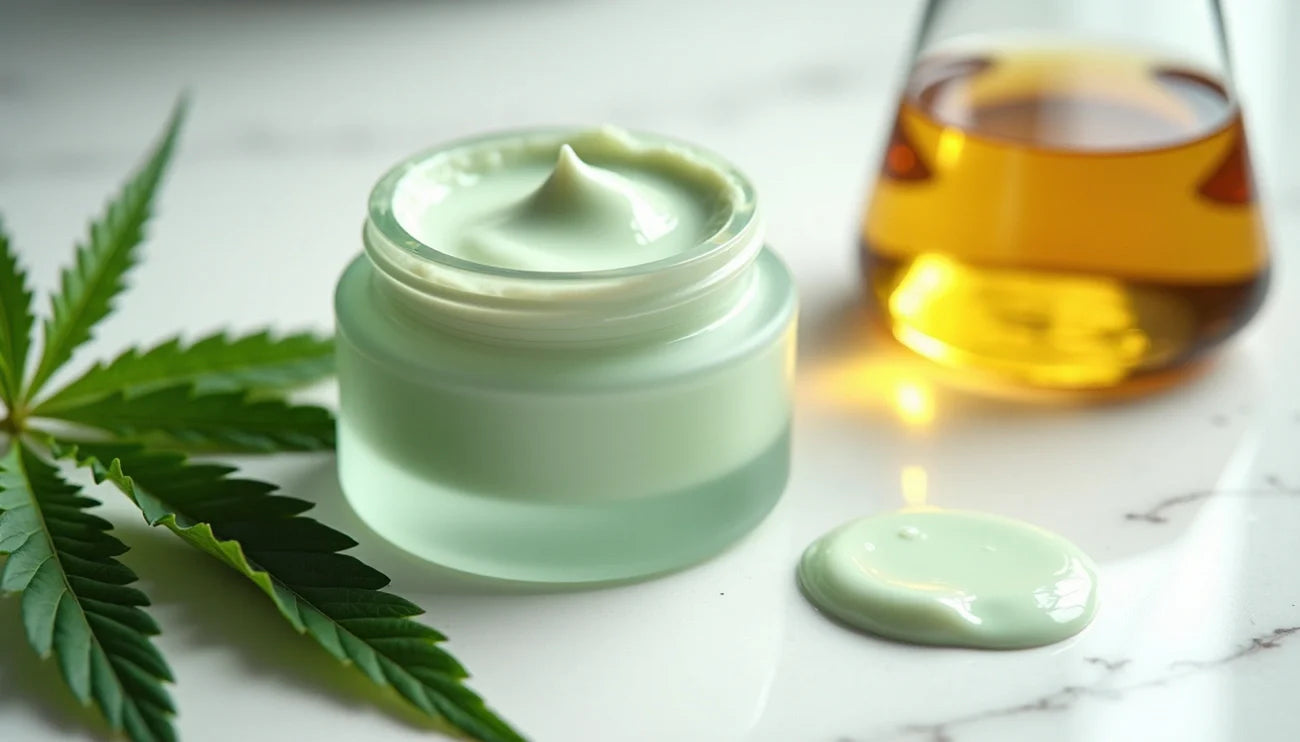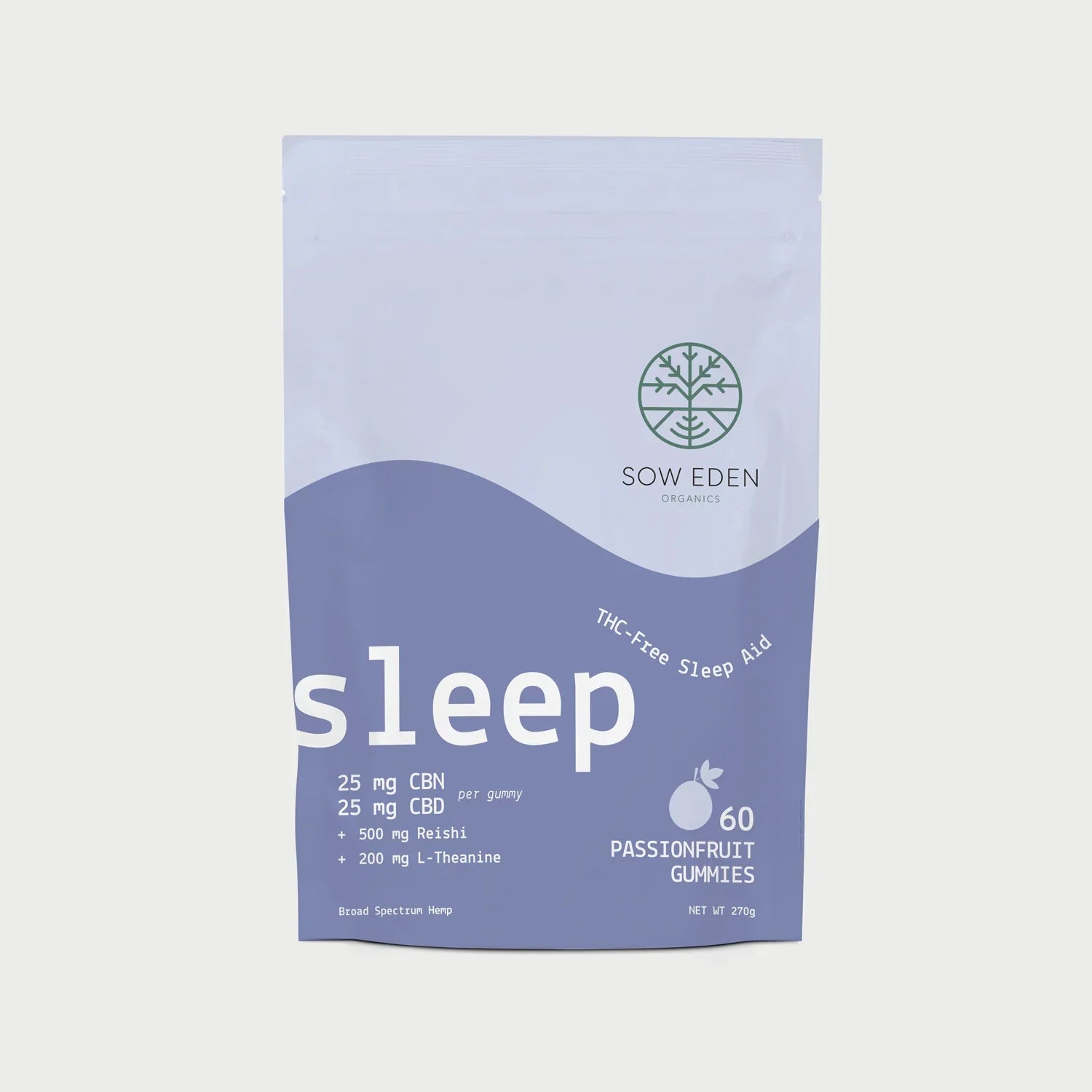The Natural Approach to Pain Management: Cannabinoids and CBG
When exploring what cannabinoid is best for pain CBG stands out as a promising option due to its unique properties and growing research support. Here's a quick comparison of the main cannabinoids for pain relief:
| Cannabinoid | Pain Relief Potential | Type of Pain | Psychoactive | Notable Feature |
|---|---|---|---|---|
| CBG | High | Inflammatory, neuropathic | No | Potent analgesic without psychoactive effects |
| CBD | Moderate-High | Inflammatory, chronic | No | Well-researched, widely available |
| THC | High | Severe chronic, neuropathic | Yes | Strongest but causes intoxication |
| CBN | Moderate | Sleep-related pain | Mild | Sedative properties help with pain-disrupted sleep |
| CBC | Moderate | Inflammatory | No | Works through different receptors than CBG/CBD |
Pain management has challenged humanity throughout history, leading us from willow bark extracts to modern pharmaceuticals. Today, many are turning to nature's pharmacy once again, specifically to cannabinoids from the hemp plant. These compounds interact with our body's endocannabinoid system - a complex network that helps regulate pain, inflammation, and immune response.
Among these natural compounds, Cannabigerol (CBG) has emerged as a particularly intriguing option for those seeking relief. Often called the "mother of all cannabinoids" because it's the precursor from which other cannabinoids develop, CBG offers unique properties that make it especially promising for pain management.
I'm Jacob Dunn, CEO of Sow Eden Organics, and my journey with what cannabinoid is best for pain CBG began after witnessing its remarkable effects on customers seeking natural alternatives for chronic discomfort. My background in holistic wellness and sustainable agriculture has positioned me to understand both the science and practical applications of cannabinoids for pain relief.

Handy what cannabinoid is best for pain cbg terms: - cbg benefits - cbg for nerve pain
Cannabinoid 101: How the Plant Fights Pain
Ever wondered why hemp feels like nature's little helper when you're hurting? To understand what cannabinoid is best for pain CBG, we need to peek under the hood at how these plant compounds actually work with our bodies.
Your body has its own internal cannabis-like system (pretty cool, right?). This endocannabinoid system (ECS) is like a complex communication network running throughout your entire body. It includes natural compounds your body makes, receptors that receive signals, and enzymes that break everything down when the job is done.
The star players in this system are two types of receptors:
- CB1 receptors - these hang out mainly in your brain and spinal cord
- CB2 receptors - these prefer the company of your immune cells and tissues outside the brain
When cannabinoids like CBG come into contact with these receptors, they can help change how you experience pain. CBG has its own unique way of chatting with these receptors that makes it special.
But the story doesn't end there! Cannabinoids are multitaskers and also interact with:
TRP channels that sense pain and inflammation (think of them as tiny thermostats for discomfort), sodium channels that transmit pain signals (like telephone wires for "ouch" messages), and various inflammatory pathways that control your body's response to injury.
What's particularly exciting is that in early studies, CBG has shown stronger pain-fighting abilities than both THC and aspirin. The best part? It does this without making you feel "high" or impaired.

Cannabis Through the Ages
Humans have been turning to cannabis for relief for thousands of years. Back around 2900 BCE, Chinese Emperor Shen Nung was already documenting cannabis in his ancient medicine book, the "Pen Ts'ao Ching." He noted its helpful properties for easing pain – without the benefit of modern labs or clinical trials!
Throughout history, healing traditions worldwide incorporated cannabis into their practices. But it wasn't until the late 20th century that scientists began solveing the plant's complex chemistry and identifying individual cannabinoids like CBG.
The findy of the endocannabinoid system in the early 1990s was a genuine "aha!" moment. Suddenly, we understood why these plant compounds affect us so profoundly. This breakthrough sparked renewed interest in cannabis research, especially in non-intoxicating cannabinoids like CBD and CBG.
Key Players Beyond CBD & THC
While CBD and THC tend to hog the spotlight, the hemp plant is actually a treasure chest of over 100 different cannabinoids, each with its own personality and benefits:
CBC (Cannabichromene) is the quiet achiever for inflammatory pain. It works through different doorways than its cousins – mainly TRPV1 receptors and something called PPAR activation.
THCV (Tetrahydrocannabivarin) is THC's sophisticated relative that may help with inflammatory pain while offering bonus metabolic perks like appetite control.
CBN (Cannabinol) is the sleepy member of the family. If pain is keeping you up at night, CBN's sedative-like qualities might be particularly helpful.
These supporting actors work alongside aromatic compounds called terpenes and flavonoids in what scientists call the "entourage effect." Think of it as a well-rehearsed orchestra rather than solo performers – together, they create something more powerful than any could achieve alone.
The more we learn about these fascinating plant compounds, the better we understand what cannabinoid is best for pain CBG and how its unique properties might offer relief where other approaches have fallen short.
What Cannabinoid Is Best for Pain – CBG in the Spotlight
When exploring what cannabinoid is best for pain, CBG consistently emerges as a fascinating frontrunner. Unlike its famous cousin THC, CBG won't leave you feeling "high" – making it perfect for folks who need relief while staying sharp and focused throughout their day.
CBG works its magic through several pathways in your body, kind of like a Swiss Army knife for pain:
First, it's a powerful anti-inflammatory. CBG actually reduces the expression of those tongue-twisting pro-inflammatory genes (like adamts4, neutrophil elastase, and myeloperoxidase) that trigger swelling and discomfort in your tissues. Think of it as turning down the volume on your body's pain alarm system.
Second, it has impressive anti-nociceptive properties – a fancy way of saying it directly blocks pain signals before they can fully register in your brain. It's like CBG stands at the gate saying, "Nope, that pain message isn't getting through today!"
Third, CBG offers neuroprotective benefits, potentially shielding your nerve cells from damage. This is particularly promising for those struggling with nerve pain conditions that can be so difficult to treat.
The research backing CBG's effectiveness is compelling. In animal studies, CBG derivatives like HUM-223 significantly reduced both swelling and pain sensitivity at a 10 mg/kg dose. What's really impressive? This natural compound performed comparably to dexamethasone, a powerful prescription steroid. Nature's solution matching medical science – that's something to get excited about!

What Cannabinoid Is Best for Pain CBG vs CBD
When comparing what cannabinoid is best for pain, CBG vs CBD presents an interesting contrast. They're like siblings – related but with distinct personalities and talents.
CBG has some unique tricks up its sleeve that make it especially effective for pain:
CBG is a potent sodium channel blocker, particularly targeting Nav1.8 channels that are crucial for pain signal transmission. This finding, published in the Proceedings of the National Academy of Sciences, reveals that CBG works similarly to some conventional pain medications – but from a natural source. It's like CBG unplugs the phone line that pain uses to call your brain.
CBG also interacts with TRPA1 channels, which play a major role in both inflammatory and neuropathic pain. By modulating these channels, CBG helps calm the storm of pain signals.
Perhaps most impressive is CBG's ability to reduce neuroinflammation – the underlying fire that keeps chronic pain burning. By cooling this inflammation in the nervous system, CBG addresses pain at its source rather than just masking symptoms.
A particularly exciting 2022 study found that CBG reduced mechanical hypersensitivity in models of chemotherapy-induced nerve pain. Anyone who's experienced the shooting, burning sensations of neuropathic pain knows how resistant it can be to traditional treatments, making this finding especially promising.
While CBD certainly offers its own pain-relieving benefits (primarily through serotonin receptors and general anti-inflammatory effects), many users report that CBG provides more noticeable physical relief. CBD seems to better address the mental and emotional aspects of pain – the anxiety and stress that often accompany it. They make a powerful team when used together!
What Cannabinoid Is Best for Pain CBG vs THC
When weighing what cannabinoid is best for pain, CBG vs THC reveals some crucial differences that might matter a lot depending on your lifestyle and needs.
THC has earned its reputation as a powerful pain reliever, but it comes with some significant drawbacks. The psychoactive effects – the "high" – can interfere with driving, working, or other daily responsibilities. THC also faces legal restrictions in many areas, and regular use can lead to tolerance, meaning you might need more over time to get the same relief.
CBG, on the other hand, offers several distinct advantages:
Freedom from impairment is perhaps CBG's biggest selling point. You can experience genuine pain relief while remaining clear-headed and functional – perfect for daytime use when you need to stay productive.
Legal accessibility makes CBG more widely available. Hemp-derived CBG containing less than 0.3% THC is federally legal in the United States, removing a major barrier for many people seeking natural pain solutions.
Unique receptor interactions set CBG apart from THC on a molecular level. While THC primarily activates CB1 receptors (creating that high feeling), CBG has a more complex relationship with our endocannabinoid system. It appears to work as a partial agonist at CB2 receptors (associated with immune function) while actually working against full activation of CB1 receptors.
For those seeking daily pain management without impairment, CBG represents an exciting alternative to THC. That said, some people with severe pain conditions might benefit from products containing both cannabinoids in specific ratios – the famous "entourage effect" in action.

CBG vs Traditional Pain Therapies: Expert Round-Up
When exploring what cannabinoid is best for pain, it's helpful to compare CBG with conventional pain management approaches. Traditional pain medications, while effective, often come with significant trade-offs that many people find troubling.
Those over-the-counter NSAIDs you might reach for when your back aches? They can cause stomach ulcers and bleeding with regular use. Even more concerning, they may increase your risk of heart problems with long-term use. And if you're healing from a bone injury, they might actually slow down your recovery by interfering with the natural inflammatory process your body needs.
The situation with prescription options isn't much brighter. Opioids, while powerful pain relievers, have fueled a devastating public health crisis that's claimed over half a million American lives since 1999. Their risk of addiction and dangerous side effects like respiratory depression make them a double-edged sword at best.
Corticosteroids present their own challenges – they're not designed for continuous use because they can weaken your bones, affect your weight, and suppress your immune system over time. They can also raise blood sugar and blood pressure, creating new health concerns while addressing others.
Dr. Ethan Russo, a respected neurologist and cannabinoid researcher, puts it eloquently: "The endocannabinoid system represents a microcosm of psychoneuroimmunology or mind-body medicine. The concept that our innate cannabinoid physiology regulates pain and inflammation, and does it in a tissue-specific manner that avoids the pitfalls of COX inhibition, makes it an neat target for drug development."

When Might CBG Be Preferable?
Based on emerging research and what we're hearing from real people, CBG seems to shine in several specific situations.
For those battling chronic pain, CBG's ability to work through multiple pathways simultaneously makes it an intriguing option. A recent survey found that nearly 74% of CBG users felt it worked better than their prescription medications for managing long-term pain. That's a remarkable finding, even if it's still preliminary.
Nerve pain can be particularly stubborn and resistant to conventional treatments. Here, CBG's interaction with Nav1.8 sodium channels (the same channels targeted by some pharmaceutical pain relievers) may explain why some people find such relief. The 2022 study on chemotherapy-induced nerve pain offers promising evidence in this area.
If you're dealing with inflammatory pain like arthritis, CBG's dual action as both an anti-inflammatory and pain-blocker might be especially helpful. Rather than just masking symptoms, it appears to address some underlying causes.
Many Sow Eden customers have shared particularly positive experiences using our CBG products for digestive discomfort. This aligns with research suggesting benefits for inflammatory bowel conditions and irritable bowel syndrome – situations where pain and inflammation often go hand in hand.
Potential Drawbacks & Unknowns
While I'm genuinely excited about CBG's potential, it's important to acknowledge what we don't yet know.
The research, while promising, is still in relatively early stages. Most evidence comes from laboratory studies and personal reports rather than large-scale human clinical trials. This means we're still learning about optimal dosing, long-term effects, and exactly who might benefit most.
Individual responses to CBG vary significantly – what works wonders for one person might produce modest results for another. This is why we always recommend starting with a low dose and gradually increasing until you find what works for your unique body chemistry.
The safety profile appears favorable compared to many conventional options, but we need more long-term studies to be certain. Questions remain about potential drug interactions and effects on specific groups like pregnant women or seniors.
There's also the challenge of bioavailability – your body doesn't absorb all the CBG you take. At Sow Eden, we've worked hard to develop formulations that maximize absorption, but it's still a consideration when comparing effectiveness to conventional medications.
I believe in transparency – CBG isn't a miracle cure, but for many people seeking natural alternatives for pain management, it represents a promising option with a different risk-benefit profile than conventional medications. As research continues to evolve, we'll gain even more clarity about what cannabinoid is best for pain in different situations.
Using CBG for Pain: Forms, Dosage, Safety Tips
When exploring what cannabinoid is best for pain, CBG products come in various forms, each with advantages for different situations:
Oils and Tinctures: * Fastest onset for oral products (10-20 minutes when taken sublingually) * Allow for precise dosing adjustments * Typically 20-30% bioavailability * Best for: Customizable dosing and relatively quick relief
Topicals: * Provide targeted relief to specific areas * Don't enter bloodstream significantly, minimizing systemic effects * Ideal for: Joint pain, muscle soreness, and localized inflammation
Capsules and Gummies: * Convenient and discreet * Provide consistent dosing * Slower onset (45-90 minutes) but longer duration * 10-20% bioavailability * Best for: Ongoing pain management with consistent dosing
Nano-emulsions: * Improved absorption and bioavailability * Faster onset than traditional oral products * Emerging technology in the cannabinoid space
For dosing, we recommend starting with 5-10mg of CBG and gradually increasing until you find your optimal dose. Most users report effective pain relief in the 25-50mg range, but individual needs vary significantly.
Potential side effects of CBG are generally mild and may include: * Fatigue or drowsiness (though many users report energizing effects) * Dry mouth * Changes in appetite * Digestive discomfort at high doses
Regarding legality, hemp-derived CBG containing less than 0.3% THC is federally legal in the United States under the 2018 Farm Bill. However, state laws may vary, so it's important to check local regulations.
Stacking CBG With Other Cannabinoids
One of the most promising approaches to cannabinoid therapy is combining multiple compounds to improve effects. This leverages the "entourage effect," where cannabinoids work synergistically.
CBG and CBD (1:1 ratio): Research and user reports suggest that a 1:1 ratio of CBG to CBD may provide stronger pain relief than either cannabinoid alone. This combination appears particularly effective for chronic and inflammatory pain.
At Sow Eden, we've found that combining CBG-A and CBD-A with complementary botanicals like Ginger Root and Lemon Peel creates a comprehensive approach to wellness that addresses both pain and inflammation while supporting immune function.
CBG and CBN: For pain that disrupts sleep, combining CBG with the more sedative CBN may help address both the pain itself and the sleep disturbances it causes.
Personalized Ratios: Some individuals may benefit from customized cannabinoid ratios based on their specific conditions and responses. Working with a knowledgeable healthcare provider can help determine the optimal combination.
Who Should Avoid or Consult a Pro?
While CBG appears to have a favorable safety profile, certain groups should exercise caution or consult healthcare providers before use:
Pregnant or Breastfeeding Women: Due to limited research on cannabinoid effects during pregnancy and lactation, these groups should avoid CBG use without medical guidance.
Individuals Taking Medications: CBG may interact with certain medications, particularly those metabolized by the cytochrome P450 enzyme system. Consult a healthcare provider if you're taking: * Blood thinners * Blood pressure medications * Immunosuppressants * Sedatives
Children and Adolescents: Limited data exists on CBG use in pediatric populations. Medical supervision is essential if considering cannabinoids for children.
Those With Liver Conditions: Since cannabinoids are primarily metabolized by the liver, individuals with hepatic impairment should use CBG with caution.
We always recommend consulting with a healthcare professional before starting any new supplement regimen, especially for those with existing health conditions or who are taking medications.
Frequently Asked Questions about What Cannabinoid Is Best for Pain CBG
Does CBG work for all pain types?
When exploring what cannabinoid is best for pain, CBG shows remarkable versatility, though it's not a one-size-fits-all solution. From what we've seen at Sow Eden and what research suggests, CBG tends to shine brightest for certain pain conditions.
Inflammatory pain seems particularly responsive to CBG - think arthritis discomfort or the uncomfortable inflammation associated with digestive issues. Many of our customers with chronic joint pain have shared stories of finding relief after other options fell short.
For neuropathic pain (that burning, tingling sensation from nerve damage), CBG's ability to interact with sodium channels makes it especially promising. The research on chemotherapy-induced neuropathy points to CBG as a potential ally for this notoriously difficult-to-treat pain.
Muscle and joint discomfort also tend to respond well to CBG applications, especially when used in topical form directly at the site of discomfort.
That said, for severe acute pain – like what you might experience after surgery or a serious injury – CBG might be better as a complementary approach rather than your primary relief strategy. Everyone's pain experience is unique, which is why we always encourage a personalized approach.
How long until I feel relief?
Timing is everything when it comes to pain relief, and with CBG, your experience depends largely on how you're using it.
Sublingual oils work relatively quickly, usually within 10-20 minutes, as they partially absorb directly into your bloodstream through the tissues under your tongue. This makes them perfect for when you need relief sooner rather than later.
If you're using a topical CBG product on a specific area, you'll typically notice effects beginning within 15-45 minutes as it penetrates the skin to reach local receptors.
For those who prefer capsules or edibles, patience is key – effects generally take 45-90 minutes to appear as your digestive system processes the CBG before it enters your bloodstream.
Most people report CBG effects lasting around 4-6 hours, though this varies widely based on your metabolism, the specific product, and your body's unique chemistry. Interestingly, many of our regular customers report that consistent daily use of CBG creates a cumulative effect, where their baseline pain levels seem to decrease over time – not just during the immediate hours after taking it.
Can I fail a drug test using CBG?
This question comes up frequently, and I completely understand the concern. The good news is that pure CBG itself won't trigger a positive result on standard drug tests, which are typically looking specifically for THC metabolites, not other cannabinoids.
However, there are some important nuances to understand:
Full-spectrum CBG products contain the complete range of hemp plant compounds, including trace amounts of THC (always less than the legal limit of 0.3%). With regular use, these minimal THC amounts could potentially accumulate enough to trigger a positive test result in sensitive testing scenarios.
Some drug tests might also have cross-reactivity issues where they occasionally confuse one cannabinoid for another, though this is becoming less common as testing technology improves.
For those with absolutely zero tolerance for risk, CBG isolate products containing no THC represent the safest option from a testing perspective.
If drug testing is a concern in your life, we recommend a few practical steps: First, opt for broad-spectrum or isolate products verified to contain zero THC. Second, always review the Certificate of Analysis (COA) for any product you're considering to confirm THC content. Finally, if appropriate in your situation, consider being transparent with relevant parties about your use of hemp-derived wellness products.
At Sow Eden, we provide detailed COAs for all our products so you can make confident decisions based on your specific needs and circumstances. Your peace of mind matters to us just as much as your wellness journey.

Conclusion
When evaluating what cannabinoid is best for pain, CBG emerges as a particularly promising option due to its multi-faceted approach to pain management. Through its interaction with the endocannabinoid system, sodium channels, and inflammatory pathways, CBG addresses pain through multiple mechanisms without causing intoxication.
The research on CBG continues to evolve, but current evidence suggests it may offer advantages over both traditional pain medications and other cannabinoids for certain conditions. Its potent analgesic properties, comparable in some studies to both THC and conventional pain relievers, make it worthy of consideration for those seeking natural pain management options.
At Sow Eden, we're committed to using the power of CBG alongside other beneficial cannabinoids and botanicals to create holistic wellness solutions. Our approach combines the ancient wisdom of plant medicine with modern scientific understanding to provide effective, natural options for those seeking relief.
As research advances, we anticipate even greater insights into how CBG and other cannabinoids can be optimally used for pain management. The future of cannabinoid therapy looks bright, with potential for more targeted formulations, improved delivery methods, and better understanding of synergistic combinations.
For those interested in exploring CBG for pain relief, we recommend starting with high-quality, third-party tested products from reputable sources, starting with low doses, and working with knowledgeable healthcare providers to integrate cannabinoids into a comprehensive pain management approach.
The journey to finding the right solution for pain is often personal and may require some experimentation. However, with the growing body of research supporting CBG's potential, it represents an exciting option in the expanding toolkit of natural pain management strategies.




